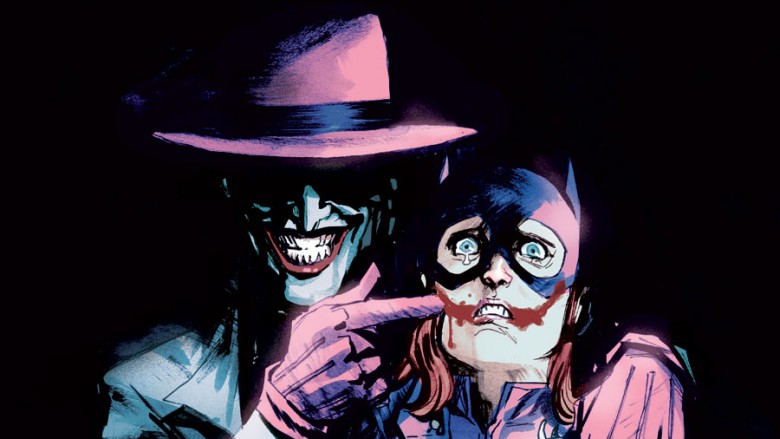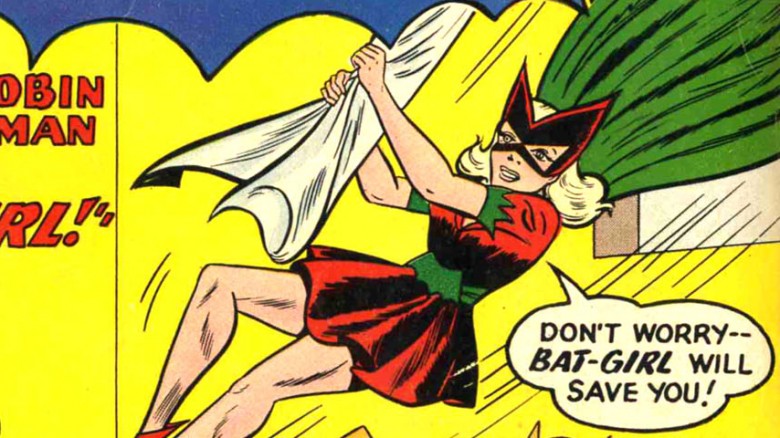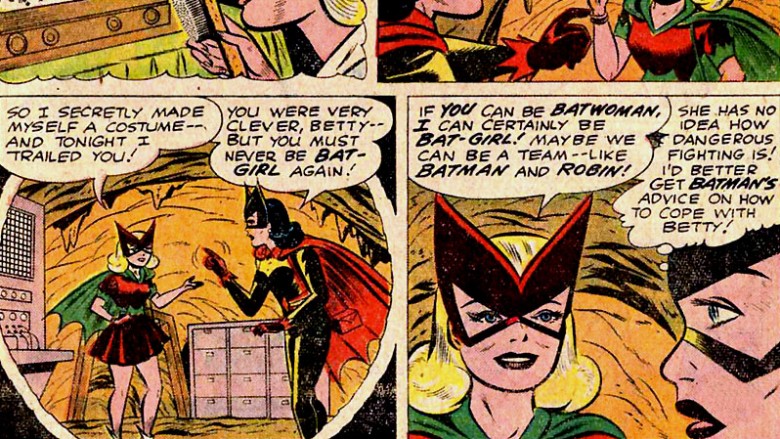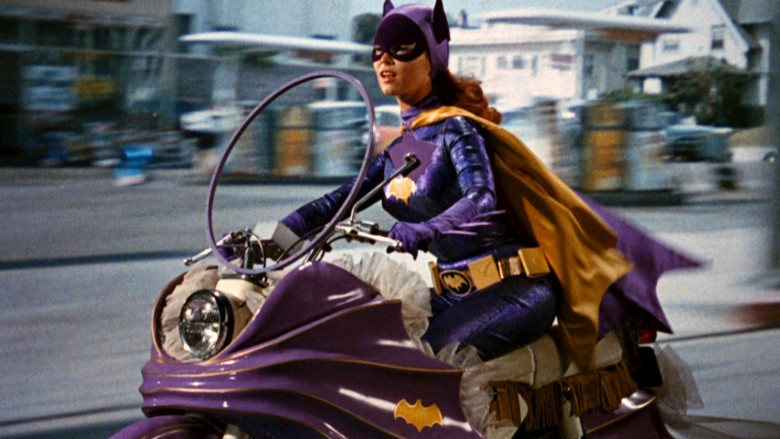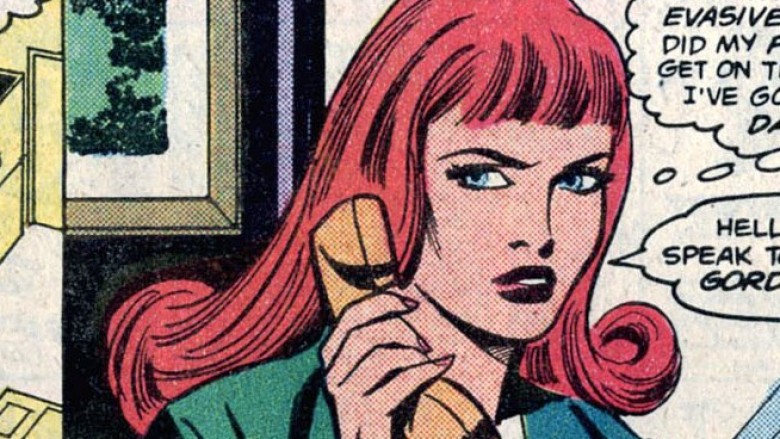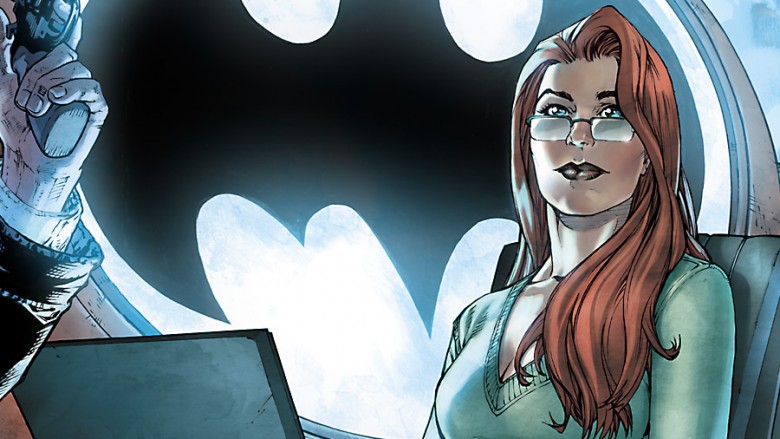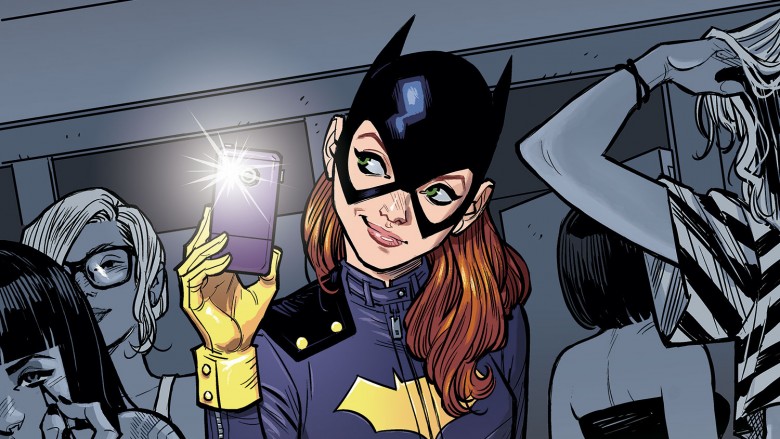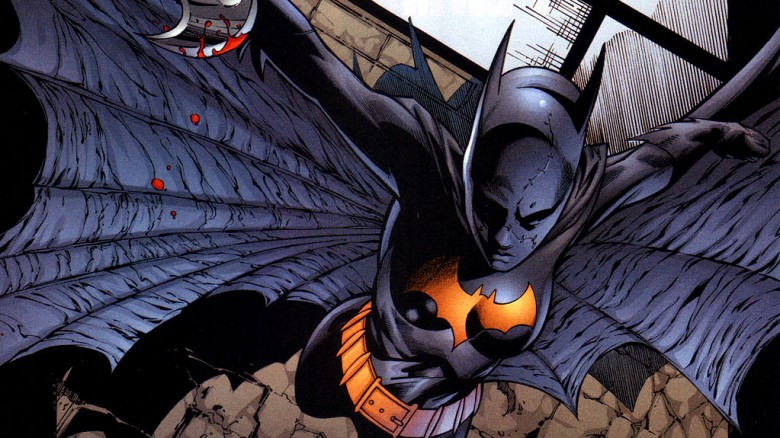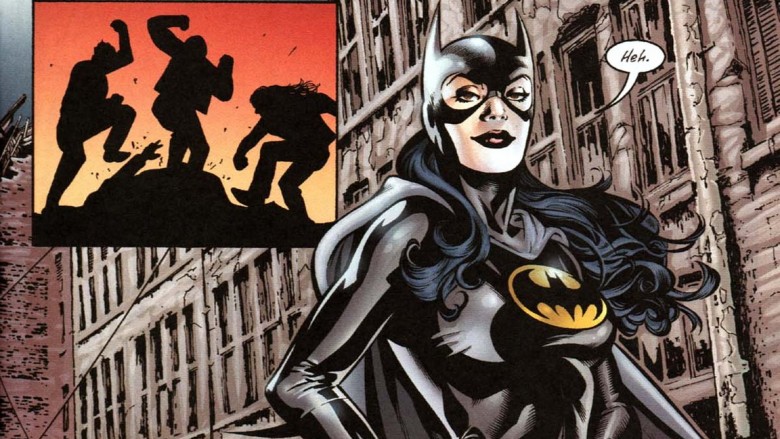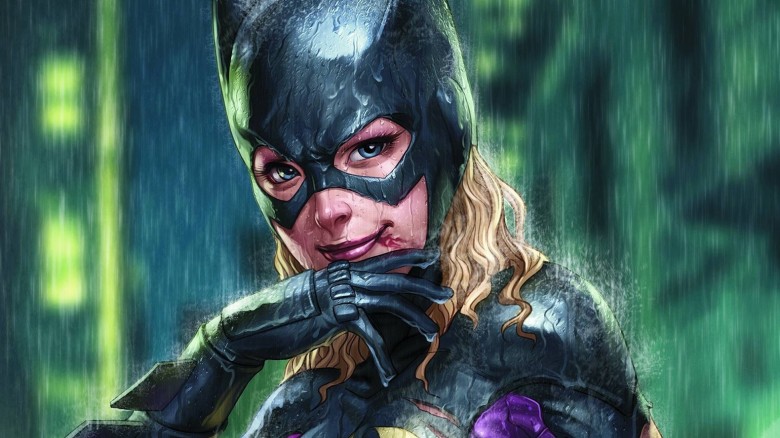The Untold Truth Of Batgirl
The internet was positively on fire when news broke that Avengers and Buffy the Vampire Slayer guru Joss Whedon would bring the character of Batgirl to the big screen. After all, Batgirl is one of the most beloved characters in the DC universe, and she's had decades of crazy Gotham City hijinks. However, her story has changed a lot over the years, and there have been many more faces behind the Batgirl mask than you could possibly imagine. If you want the inside scoop on one of the greatest comic book characters ever created, you don't need a high-tech Batcomputer to do your investigating. Just check out this awesome guide to the untold truth of Batgirl!
She's at the center of controversy
Batgirl is, unfortunately, at the center of an ongoing controversy that concerns the representation of women in comics, and it all centers on Alan Moore's The Killing Joke. In this comic, the Joker is determined to prove it only takes one bad day to drive anyone crazy. The Clown Prince of Crime ends up kidnapping Commissioner Gordon and crippling his daughter, Barbara Gordon. Things get much worse when he strips off Barbara's clothes, takes photos of her body, and quite possibly rapes her.
It was a really low point for the character. In fact, Alan Moore wishes he'd never written that part in the first place, citing that scene as one of the reasons he doesn't like The Killing Joke. But thanks to Moore's graphic novel, Barbara Gordon didn't appear as Batgirl in mainstream DC comics for decades, though other characters filled her Bat-boots in the meantime. Still, the controversy started anew when DC adapted the comic into an animated movie. This time, not only was Barbara horribly brutalized, but the movie also added a subplot about Barbara starting a sexual relationship with Batman shortly before she's crippled.
Not only was this gross all around, but it further cemented Barbara Gordon as an example of the "Women in Refrigerators" trope. In other words, that's a female character who's killed or tormented merely to provide motivation for a male protagonist. Come on, DC. Batgirl deserves way better than that.
She was created out of gay panic
Jokes about Batman and Robin being gay have become a big part of pop culture. The characters get lampooned by venues such as Saturday Night Live (with their "Ambiguously Gay Duo" cartoons), and George Clooney—who portrayed Batman in the terrible Batman & Robin film—insists he deliberately performed Bruce Wayne as gay. Of course, this kind of stuff didn't fly back in 1954, when the psychiatrist Fredric Wertham published his landmark scaremongering text Seduction of the Innocent, a book that criticized the alleged gay relationship between Batman and Robin and claimed these stories were bad for kids. Interestingly, however, we would've never gotten Batgirl without Wertham's book.
One year after Seduction of the Innocent came out, DC introduced the original Batwoman, Kathy Kane. She served as a blatant love interest for Batman in order to reaffirm the character's heterosexuality. Batwoman was relatively popular, and a few years later, DC gave her a sidekick named Bat-Girl. This character was not Barbara Gordon but instead Kathy's niece, Bette Kane. In addition to adding more parallels to Batman and Batwoman (now each of them had a teenage sidekick), Bat-Girl was added to introduce "romantic tension" to stories with Robin. So in a strange twist of fate, DC fans around the world owe a debt of gratitude to Fredric Wertham, even though the guy absolutely hated comic books.
She nearly got Batman canceled
In her own way, the original Bat-Girl nearly destroyed the Batman franchise. For a while, DC Comics really leaned into the idea of the Batman Family. This was the term for the group that included Batman and Robin, Batwoman and Bat-Girl, Ace the Bat-Hound, and even Bat-Mite. Eventually, the tales of the Caped Crusader and his pals became much more akin to a family sitcom than to a comic book, and Batman comic sales reflected this fact. In fact, sales got so bad that Batman was nearly canceled.
Ultimately, the character of Batman was saved by legendary DC editor Julius Schwartz. In 1964, one of his first actions was to ditch the extended characters of the Batman Family and return Batman and Robin to their roots. Better still, the Adam West TV show debuted in 1966, helping the Caped Crusader become more popular than ever. Bat-Girl, however, was brushed to the side, and this incarnation of the character was officially retconned out of existence during the Crisis on Infinite Earths.
The modern Batgirl debuted on TV
Sure, Bette Kane was the original, but the prototype for the modern incarnation of Batgirl was introduced in the third season of the Adam West Batman television show. Yeah, we know Barbara Gordon technically appeared first in a January 1967 comic, but it was the TV show that made her an icon. The character was memorably played by Yvonne Craig, and considering how the previous version of Bat-Girl was one of the reasons the comic was nearly canceled, it's quite ironic that the television Batgirl was actually introduced in order to draw new viewers and keep that show from going off the air. While the effort didn't work, it introduced the world to a Barbara Gordon who was a bit different from what the character would eventually become.
For one, the TV incarnation of Barbara Gordon lacked the genuine red hair that would eventually become a staple of Barbara Gordon's look. She didn't have a perfect memory, martial arts abilities, or computer programming skills (the latter being understandable for a 1960s TV show), but she did work in the Gotham City Library, which foreshadows the later character's interests in research and academia, as well as her later focus on library sciences. Sadly, actress Yvonne Craig passed away in 2015, leaving behind a character who helped shape comic book history.
She's older and smarter than you think
Over the years, Barbara Gordon has been effectively de-aged. Most modern tales make her around the same age as her on-again, off-again love interest Nightwing. In more recent Batgirl stories, she actually returned to college to complete her doctoral studies in the hipster-filled Burnside neighborhood of Gotham City. What makes this fascinating, though, is that the comic book debut of Barbara Gordon presented her as older and more educated.
In 1967, when Barbara Gordon was brought to life in the comics, she was introduced as a grown woman in her mid-twenties who had a doctorate in Library Science and worked as a librarian. Later on, she actually ended up becoming a member of Congress, which means she had to be a minimum age of 25. Thus, early comics established a very clear age disparity between Barbara and teen sidekicks such as Robin/Nightwing. However, DC's seeming desire to pair the two up—along with their general mania for making their characters younger to draw in new readers—has progressively made Barbara Gordon younger and younger.
She's an awesome hacker
While the crippling of Barbara Gordon in The Killing Joke was pretty tragic, it did have one positive outcome...though it wasn't something DC had foreseen. At the time, the company had no plans for the Barbara Gordon or Batgirl characters, so Kim Yale and John Ostrander reinvented her as anonymous badass hacker Oracle. Interestingly, this new version of Barbara Gordon was revealed during Ostrander's classic Suicide Squad run, as Oracle was using her elite hacking skills to help the Squad during their missions.
Overall, it's an amazing and satisfying arc for her character. Rather than feeling defeated or diminished by what's happened to her, Barbara Gordon manages to use her computer skills to fight bad guys. And she makes a huge impact with her hacking skills, helping out Batman and the Justice League, as well as the Birds of Prey.
Later comics revealed that, via surgery and therapy, Barbara Gordon regained her ability to walk. So naturally, she soon resumed her crime-fighting activities as Batgirl. And while those comics were notable for further exploring Barbara Gordon's humor and complexity, many agree it was sad that DC Comics lost what was arguably their only well-developed character suffering from a physical disability.
She went back to school
After dealing with her fair share of drama and villains during Gail Simone's great run as writer, Batgirl eventually decided she needed a new start. This brings her to the district of Burnside, where she enrolls in college as a PhD student by day, although she has quite a few extracurricular activities at night, keeping the city safe as a colorful crime-fighter. In those initial Batgirl stories by Brenden Fletcher and Cameron Stewart, our hero is portrayed as young but technologically savvy, someone who deliberately puts herself online as a kind of public figure. It was a bold departure from the Batgirl we'd seen before and a rather strident way of separating her from the mysterious and quasi-mythic Batman. After all, can you imagine Bruce Wayne taking a selfie?
Passing the torch to Cassandra Cain
Given the character's popularity, you might think that the first ongoing Batgirl title would focus on Barbara Gordon. But as you've probably guessed, this wasn't the case. Instead, that honor fell to the character of Cassandra Cain, who served as a very different kind of Batgirl in the years after Barbara Gordon had transformed into Oracle.
Cassandra Cain was raised by her assassin father, David Cain, who taught her to fight instead of how to speak, hoping to utilize the language centers of her brain to make her a better killer. In short, she learned how to speak violence, and while the approach was definitely unorthodox, it worked. However, Cassandra ran away from her father after killing a gang member at her dad's request. She wandered around in guilt for nearly a decade before becoming a supplies runner for Oracle during the No Man's Land comic event. After saving Commissioner Gordon's life from her dear old dad, David, Cassandra would take on the mantle of the new Batgirl. And while her story has taken some weird turns, she remains an active character in the Batman universe. Fingers crossed we'll get a movie about her someday.
The Huntress is too violent for Batman
The record for the shortest run as Batgirl has to go to Helena Bertinelli, better known as The Huntress. Much like Bruce Wayne, her family was destroyed by mobsters, so she's dedicated her life to stopping crime in general and crime families in particular. However, as you might've guessed from her name, her methods are often a bit too violent and unpredictable for Batman's taste, and it's unlikely he'd ever voluntarily offer her the role of Batgirl.
However, when the Dark Knight goes missing at the beginning of No Man's Land, Huntress takes it upon herself to don Batgirl's costume. She's gambling that the fear of Batman will translate to fear of her, and the plan works. However, after a heated argument with the newly-returned Batman about her unwillingness to follow his orders, she ditches the costume and identity, leaving it up to Cassandra Cain to carry on the Batgirl legacy with Batman's full blessing. In other words, she's a great vigilante but a lousy employee.
Don't forget about Stephanie Brown
Of course, Barbara Gordon, Cassandra Cain and Helena Bertinelli aren't the only women who've put on the Batgirl mask. While she's a relatively minor character, Stephanie Brown nonetheless rose to prominence in the Batman family ranks. She's been her own character before, using the name of Spoiler, and during this period, she had a baby, gave it up for adoption, developed a relationship with Robin, and received special combat training from Cassandra Cain. Later, when the Tim Drake Robin is temporarily retired from his superhero identity, Stephanie creates her own Robin costume and aggressively volunteers to be Batman's sidekick. The Caped Crusader agrees and continues her training...but that doesn't last very long.
Unfortunately for Stephanie, she eventually disobeys orders, ticking Batman off, so he ends up firing her. She then takes the rather drastic step of starting a gang war to prove herself to Batman. Sadly, she's later tortured by the Black Mask and apparently dies with Batman by her side.
But comics being comics, she was later revealed to be alive, and the dead body we saw was actually the corpse of a drug addict. Then, the twists keep on coming. When Batman seemingly dies, Cassandra gives the Batgirl identity to the returned Stephanie. After a touch-and-go first mission, she receives the full blessing from Barbara Gordon and even gets a cool new costume. Stephanie would go on to have many adventures as Batgirl, but after the Flashpoint event resets many aspects of DC's universe, Barbara Gordon would eventually return as everybody's favorite superhero. However, later comics bring Stephanie Brown back in her original Spoiler identity, and she sometimes helps out when Barbara needs backup. After all, Batgirls gotta' stick together.

